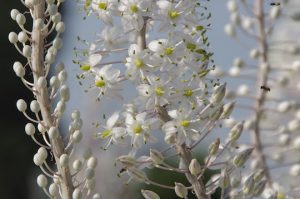Did you see John Moran’s glass olive in episode five of “Blown Away,” season three? It was not just gorgeous, it was immense. Granted the challenge was to make an oversized version of a real-life object, but his glass olive was so full of color and texture, including the pimento stuffed inside, also made of glass. The glass olive seemed to have more life than the real one from a jar; it was fresher, greener, and, to my eye, far more flavorful.
This past Thursday night and Friday marked my favorite Jewish holiday, Tu B’Av(the 15th of the Hebrew month of Av), which I just learned coincides with “olive day.” You see, Tu B’Av starts with the full moon that falls in mid-August and tends to be when, thankfully, the summer sun finally starts to abate.

The sage, Rabbi Eliezer the Great, said, “From the 15th of Av and onward, the strength of sun weakens” (Babylonian Talmud, Tractate Ta’anit 31a). The Israeli botanist Nogah Hareuveni goes further, quoting Arab olive growers as saying, “Take an olive between your fingers on the day the white squill blossoms, and you will be able to squeeze oil from it. Before that there is no oil in it.”
The white squill is a major feature of the Israeli and Palestinian August landscape as its blossoms are the only color contrasting with the dry summer fields. Nature is trying to show us a change which adds so much meaning.
Most often today, Tu B’Av is seen as a Jewish Valentine’s or Sadie Hawkins Day. In the ancient world, it was a day in which women would exchange white dresses and dance in the vineyard until young men joined them. The couples resulting from this encounter represented a redemption of the world.
Tu B’Av comes six days after Jews commemorate the destruction of both temples and other tragedies with a major fast day; the same white party also took place at the end of Yom Kippur, the Jewish Day of Atonement. A message of hope and life after the encounter with death is truly important.
“Olive day” adds another dimension. Not only are we marking an historical shift (and at Yom Kippur a spiritual one), but we’re also marking a natural shift. The blazing sun makes way for white squill blossoms and for the arrival of olive oil. Interestingly, Yom Kippur falls at about the time olives reach full maturation.
What do I make of this additional perspective? I find myself thinking about all the ways we busy ourselves in summer in addition to year-round and how we often need to escape, to vacate or vacation, to get back to who we wish to be. Love often sustains us through the weeks, months, and years. The olive and the white squills and dresses remind us to look at what is in front of us and to squeeze gently.
It turns out the fullness of life is not just on a calendar; it is very much all around us, in the natural world and in the faces of others. If we take the time to realize that life is full of emerging bounty, we just might make more of the time we have and harvest more benefits come fall.
About Rabbi Jeremy Winaker
Rabbi Jeremy Winaker is the executive director of the Greater Philadelphia Hillel Network, responsible for West Chester University, Haverford, Bryn Mawr, and other area colleges. He is the former head of school at the Albert Einstein Academy in Wilmington and was the senior Jewish educator at the Kristol Hillel Center at the University of Delaware for four years. Rabbi Winaker lives in Delaware with his wife and three children.


Comments